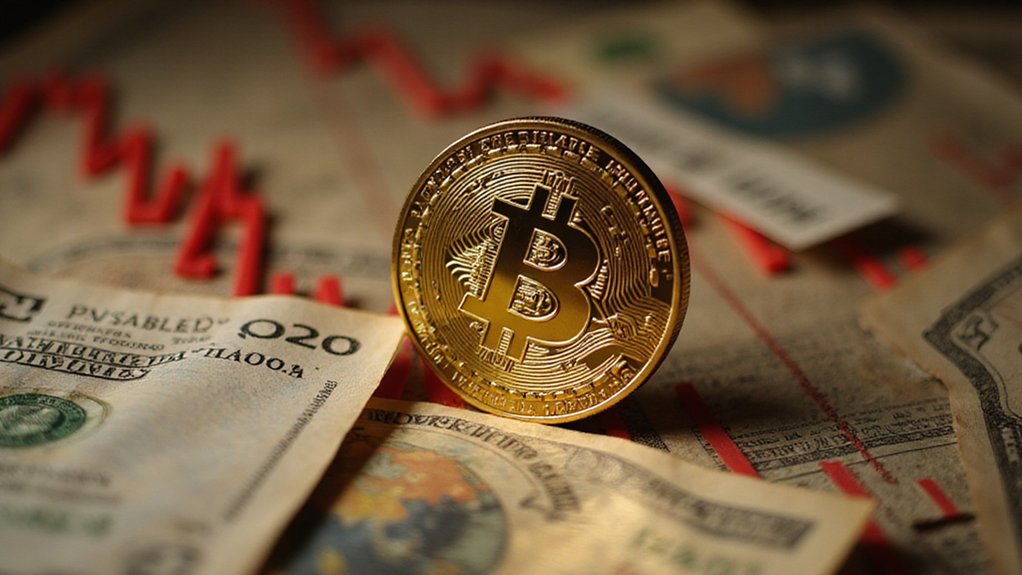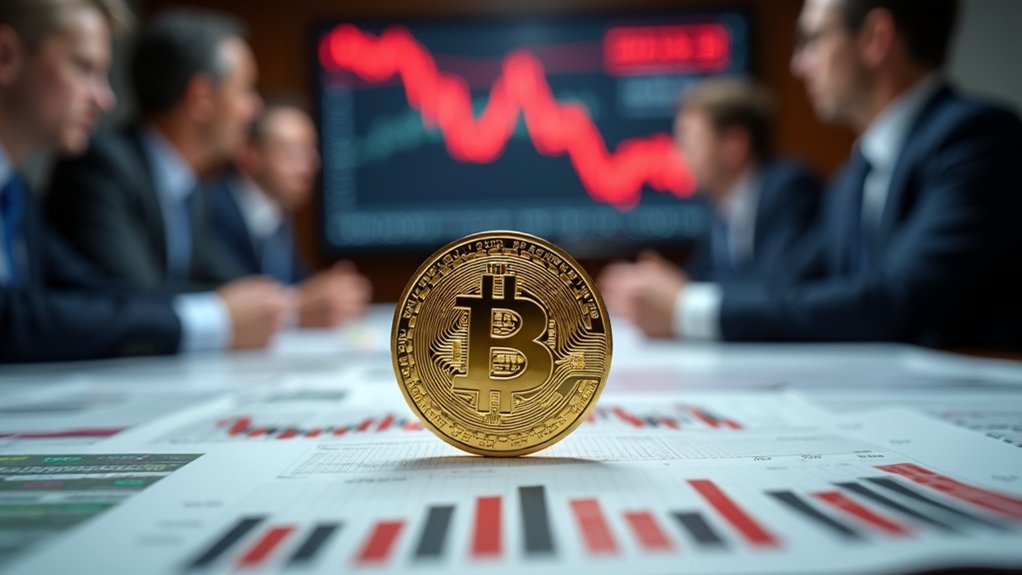Bitcoin’s retail army has achieved something remarkable: they’re buying the cryptocurrency faster than miners can produce it. The combined accumulation by smaller holders—Shrimp (under 1 BTC), Crab (1-10 BTC), and Fish (10-100 BTC)—reaches approximately 19,300 BTC monthly, comfortably exceeding the post-halving supply issuance of 13,400 BTC. This mathematical imbalance helped propel Bitcoin to all-time highs near $122,884 in mid-July 2025, though one might wonder if retail investors paused to contemplate the implications of their price-agnostic enthusiasm.
Bitcoin’s retail investors are absorbing new supply faster than miners can produce it, creating fundamental market imbalance.
The demographic transformation underlying this demand surge proves equally striking. Some 28% of American adults—roughly 65 million people—now hold cryptocurrencies, nearly doubling since 2021. Perhaps more tellingly, 14% of non-owners plan purchases in 2025, while 67% of current holders intend to increase their positions. This expansion occurs despite persistent technology safety concerns among 40% of crypto owners and platform access issues affecting nearly 20% of users.
Mid-tier investors (100-1,000 BTC), including hedge funds and family offices, have quietly increased their Bitcoin share from 22.9% to 23.07% between January and April 2025. Their strategic accumulation during price pullbacks from $100,000 to the $70,000-$85,000 range suggests sophisticated buying rather than retail-style panic responses. Bitcoin’s appeal to this demographic stems from its limited supply, with two-thirds of potential buyers targeting it specifically for this characteristic. Recent market volatility has prompted some investors to explore alternative opportunities, with emerging networks like Kaanch offering staking yields up to 119% APY as traditional investment approaches face increasing competition.
Meanwhile, the largest holders (over 10,000 BTC) reduced their share from 15.0% to 14.7%, possibly reflecting regulatory caution or portfolio rebalancing. Security breaches at major exchanges during Q1 2025 contributed to heightened volatility that influenced some institutional repositioning decisions.
This retail-driven absorption of new supply fundamentally alters Bitcoin’s market dynamics. When smaller holders consistently purchase regardless of volatility, they effectively reduce the available float for other market participants. The phenomenon creates what analysts describe as persistent price support, even as institutional buying by sovereign wealth funds intensified during early 2025.
The irony remains palpable: while retail investors often receive criticism for emotional decision-making, their price-agnostic accumulation strategy has proven remarkably effective at supporting Bitcoin’s bull market narrative. Whether this retail conviction survives the inevitable sharp corrections that characterize cryptocurrency markets represents perhaps the most compelling question for Bitcoin’s trajectory ahead.









